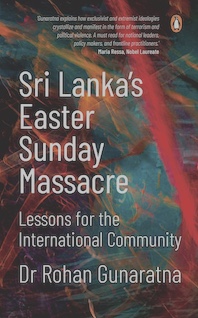The plan to end the war in Ukraine without victory

Former President Donald Trump has a secret plan to quickly end the war in Ukraine. Trump, the presumptive Republican nominee for the 2024 presidential election, says he plans to implement the plan before he takes office after defeating President Joe Biden in the upcoming rematch.
“As president-elect, I will resolve the war between Putin and Zelensky before I take office on January 20th,” the former and most likely future president said at the debate with Biden last month. “People are being killed so needlessly, so stupidly, and I will resolve this, and I will resolve it quickly, before I take office.”

Trump has kept the details of his peace proposal secret, but he has indicated that, like his promise, he will protect the freedom of Wall Street Journal Reporter Evan Gershkovich, it is based on his personal relationship with Russian President Vladimir Putin.
“I’m going to get him (Gershkovich) out very quickly as soon as I take office, before I take office … literally as soon as I win the election,” Trump promised at the debate.
Trump did not comment on how he would force both sides to the negotiating table as president, but openly suggested that he would cut off U.S. aid to Ukraine if President Volodymyr Zelenskyy refused to make concessions to Putin.
When asked directly, Trump avoided supporting Zelensky’s vision of victory, which would require Russia to withdraw from all occupied territories, including the Crimean peninsula, and Ukraine to join NATO.
“I don’t think in terms of winning and losing. I think in terms of getting this thing done so we stop killing all these people,” Trump said at a CNN town hall last May. “I don’t want any more deaths. They’re dying, Russians and Ukrainians. I don’t want them to die anymore.”
Trump’s idea is to pressure Selenskyj to cede Crimea and the Donbass border region to Russia,” said insiders familiar with the WashingtonPost in early April.
“Privately, Trump has said that he believes both Russia and Ukraine ‘want to save face, they are looking for a way out,’ and that people in parts of Ukraine would be OK with being part of Russia,” the newspaper reported.
Coincidentally, just days later, the America First Policy Institute, a think tank led by two Trump advisers, released a little-noticed research report outlining the approach they thought Biden or Trump should take.
“This should begin with a formal U.S. policy aimed at ending the war. Specifically, this would mean the United States pursuing a formal policy aimed at a ceasefire and a negotiated settlement to the Ukraine conflict,” said the white paper, written by retired Lt. Gen. Keith Kellogg, a former national security adviser to Trump, and Fred Fleitz, chief of staff on Trump’s National Security Council.
“The United States will continue to arm Ukraine and strengthen its defenses to ensure that Russia does not make further advances and does not attack again after a ceasefire or peace agreement. But it will also condition future American military assistance on Ukraine’s participation in peace talks with Russia,” the document continues.
To persuade Putin to participate in peace talks, the United States and other NATO countries would “offer Ukraine a postponement of its NATO membership for an extended period in exchange for a comprehensive and verifiable peace agreement with security guarantees.”
Kellogg formulated the carrot-and-stick strategy in an interview with Reuters.
“We’re telling the Ukrainians, ‘You’ve got to come to the negotiating table, and if you don’t, U.S. support will dry up,'” Kellogg said. “And you’re telling Putin, ‘He’s got to come to the negotiating table, and if you don’t come to the negotiating table, we’re going to give the Ukrainians everything they need to kill you on the battlefield.'”
It should not take much convincing, given that his forces are suffering terrible losses on the battlefield and that the proposed terms would put him in a strong position to force Ukraine to give up all four regions claimed by Moscow, one of his stated prerequisites for a peace deal.
“Ukrainian troops must be completely withdrawn from the Donetsk and Luhansk People’s Republics, as well as the Kherson and Zaporizhia regions,” Putin said during a meeting with his Foreign Ministry officials in the Kremlin on June 14.
“As soon as Kyiv declares that it is ready to make this decision and begin an actual withdrawal of troops from these regions, and also officially announces that it is abandoning its plans to join NATO, our side will obey an order for a ceasefire and the start of negotiations, which we will issue at the same moment,” Putin said.
Zelensky, who is pushing his own peace plan, immediately rejected Putin’s conditions, comparing them to Adolf Hitler’s demands for surrender in World War II.
“These messages are ultimatum messages,” said Zelensky. “This is the same thing that Hitler did.”
While Zelensky said Ukraine will work with next year’s US president, he is concerned that defeatism is spreading in the MAGA wing of the Republican Party.
“Ukraine is not going to win this war,” Trump argued at the June debate. “They’re running out of people, they’re running out of soldiers, they’ve lost so many people. It’s so sad.”
Trump’s desire to end the war quickly is putting enormous pressure on Zelensky. He fears that the US under Trump would like to write off large parts of Ukraine in order to appease Putin.
“It is impossible to help Ukraine with one hand and shake Putin’s hand with the other,” Selenskyj told the Philadelphia Inquirer in an interview on June 24 in Kyiv. “It won’t work.”
“Everyone is still afraid that Russia might break apart. Everyone is afraid of what will happen to Russia without Putin and whether everything will stay as it is or whether it will get worse,” Zelensky said, arguing that half-hearted US measures, such as limiting Ukraine’s ability to penetrate deep into Russian territory with long-range ATACMS missiles, gave Putin a free hand to improve his negotiating position.
“Every step forward on our territory, every occupation, every village, even if it were completely destroyed, is positive for them because it is important for them to negotiate as much as possible,” he said.
Like many in his base, Trump believes the US is throwing good money after bad to prop up Ukraine in a war it is bound to lose, and he believes Zelensky is exploiting the US and its allies in his quixotic quest for glory.
“Every time Zelensky comes to this country, he takes $60 billion with him. He is the greatest salesman of all time,” Trump said several times.
This argument resonates with his base and is echoed by his most vocal supporters, including Senator JD Vance (R-OH), who, at the time of this writing, is still in the running to be Trump’s vice presidential running mate.
“The people who want us to pour unlimited resources into Ukraine want us to believe two things at once,” Vance said on Fox News Sunday in April. “On the one hand, they want us to believe that the Ukrainians in the far east of Ukraine are close to victory. On the other hand, they want us to believe that Vladimir Putin is about to march all the way to Paris. You can’t believe both at the same time.”
“It’s not that we don’t admire the courage of the Ukrainians – we certainly do. It’s just that America is overwhelmed. We don’t have the industrial capacity to support a war in Ukraine, a war in Israel and potentially a war in East Asia if the Chinese attack Taiwan,” he said, repeating an argument he first made at the Munich Security Conference in February. “So America has to choose.”
Although Trump sees himself as a master of the “art of the deal,” outgoing Estonian Prime Minister Kaja Kallas, who has been nominated as the European Union’s top diplomat, has a warning for Trump about Russian negotiating tactics, which she says date back to the days of Soviet Foreign Minister Andrei Gromyko.
“Three things. First: demand the maximum. Don’t ask, but demand something you never got. Second: issue ultimatums, threaten. And third: don’t give an inch in negotiations,” Kallas said in an interview. “Because there will always be people in the West who will offer you something, and in the end you will have a third or even half of something you didn’t have before.”
Former US Ambassador to NATO Kurt Volker advocates an alternative strategy to counter Putin’s strategy of waging a war of attrition until the West gives in: a way must be found to make Ukraine’s eventual NATO membership a fait accompli.
“If we tell Vladimir Putin that Ukraine can only join NATO after the war, then that is a message to Putin to continue the war,” Volker said in an interview with Euromaidan Press.
“NATO can give Ukraine a commitment, but also make a public statement that could be read by Russia, that we would help defend the Ukrainian territory that Ukraine controls,” Volker said. “So no more Russian territorial conquest, but we would not participate militarily alongside Ukrainian forces in the reconquest of territory. That is a matter that Ukraine has to deal with itself.”
Trump argues that if anyone should do more to help Ukraine, it should be European countries, not the US, because “it has a bigger impact on them, because of the location, because there is an ocean between us.”
This argument is reminiscent of America’s isolationist mood before entering World War II.
“Some of our people would like to believe that wars in Europe and Asia are of no concern to us,” President Franklin D. Roosevelt said in a fireside chat in December 1940. “But the vastness of those oceans is no longer as great as it was in the days of the clipper ships.”
“They tell you that the Axis powers are going to win anyway, that all this bloodshed in the world could be avoided, that the United States might as well throw its influence into the balance of a dictated peace and make the best of it that we can,” Roosevelt said.
“They call it a ‘negotiated peace’. Nonsense! … Such a dictated peace would not be peace at all. It would be just another ceasefire.”
CLICK HERE TO READ MORE FROM THE WASHINGTON EXAMINER
Ukraine had already learned a hard lesson about the value of Russian security guarantees in 1994, when it returned its nuclear weapons to Russia and in return received a guarantee from Moscow that its territorial sovereignty would never be violated.
“A ceasefire is the best option for the Russians so that they can prepare for even more attacks,” says Zelensky.



